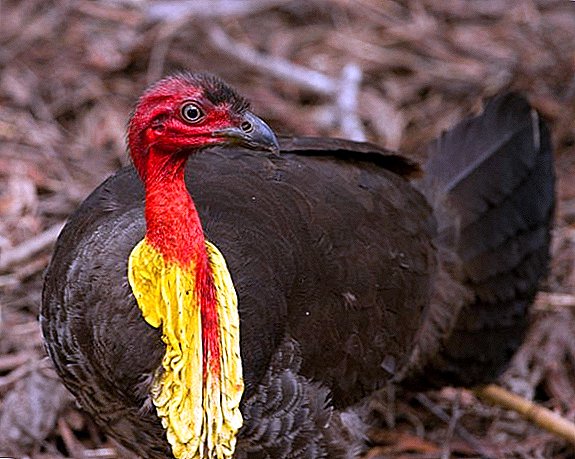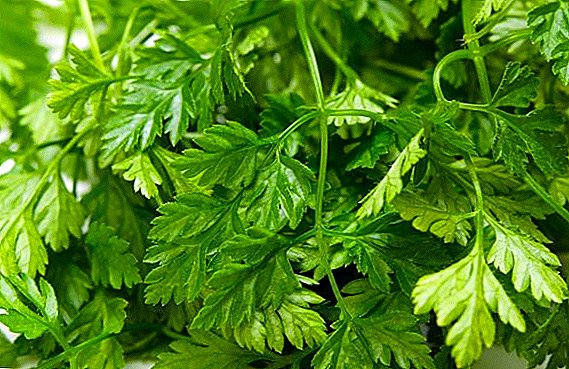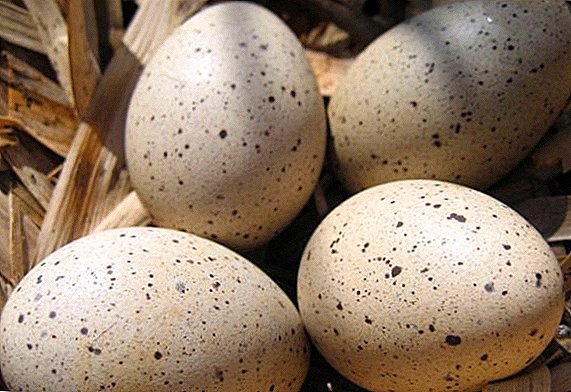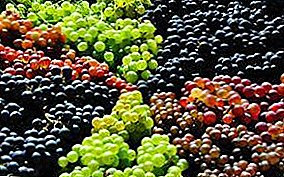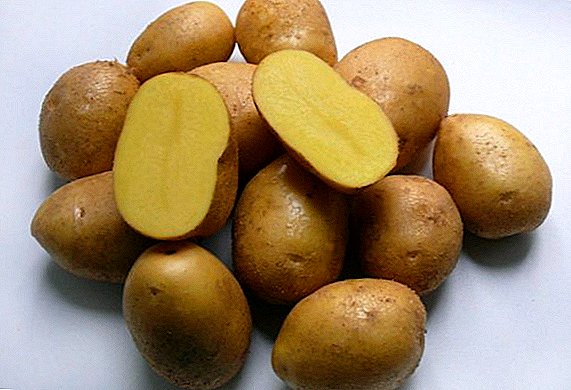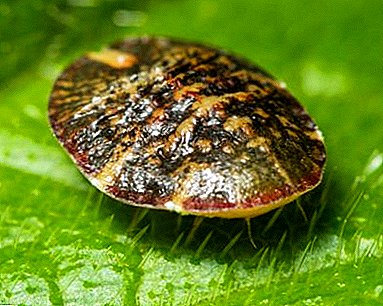
For any florist, a disease or attack by a parasite of a favorite plant is a disaster. At this point, the owner has to be nervous and spend energy in order to save the beloved flower from death. This is especially true for orchid owners.
They are not only very capricious, but also subject to all sorts of diseases and parasites. One of the most dangerous pests is the shield and the false guard, since untimely control of them can turn into a sad outcome for an orchid. As the saying goes: “Keep your friends close, and your enemies even closer.”
Definition
Since fighting blindly is stupid and unwise, it is necessary to know your enemy by sight. What is a scammer and a false shield?
Classic type
 Shchitovka is an insect from the family of semi-coleoptera from the superfamily of the insects. The family has more than 2,400 species. It multiplies very quickly, which is why it is very dangerous. Harm caused by the larvae and females of these insects. They usually stick along the central vein. Over time, due to constant nourishment and immobility, the sense organs and limbs are lost.
Shchitovka is an insect from the family of semi-coleoptera from the superfamily of the insects. The family has more than 2,400 species. It multiplies very quickly, which is why it is very dangerous. Harm caused by the larvae and females of these insects. They usually stick along the central vein. Over time, due to constant nourishment and immobility, the sense organs and limbs are lost.
Begins growth and coating a dense shield of wax threads. Grown shield eventually reaches 2-3 mm in diameter. In females, it is more rounded and larger than in males. Males have an oblong shield. After mating, males die. The females, in turn, lay about 1,100 eggs under the scute. Or die after the birth of the larvae.
Bespantsirnaya
The so-called false shield is very similar to the classic type of pest, but differences can be noticed with the naked eye. The fact is that the false guard has no wax shell, and its role is performed by dying female skin during moulting. Therefore, the plants affected by this insect are flatter, not so prominent.
What types exist?
There are a great many species of shield and false shield. It is worth considering the main types of shield insects that are most often found on plants:
Orange
Has the look of a drop. Dangerous for laurel and citrus plants.
Pest pear-shaped European origin
It harms fruit seed and stone fruit plants, affecting the trunks and branches.
Pine Fusiform
Harm pines, destroying their pine needles. The result of her “work” is the yellowing and falling off of the needles from the plant.
False Californian
It is dangerous for citrus plants.
Orange
It is also called the Red Orange shield, due to the formation of bumps of a dark brown color. Damages rosaceous plants and citrus.
Californian parasite
Loves to live on apples. Also habitat are other seed plants. Leaves red spots.
Red pear
Especially dangerous for cornels, walnut, horse nut, stone fruit and pome plants.
Yellow Pear Shaped
Signs of appearance are red spots on pome fruits.
Also no less varied false scale:
Plum
Loves the juice of Rosaceae and stone fruit plants.
Spruce
Dangerous for conifers.
Acacia
Pretty dangerous for apple, cherry, peach, gooseberry, plum, currant and many other plants.
Soft
Dangerous for orchids, palm, citrus and aroid plants. It can be detected by candied discharge on the leaves or sticky on the glass.
What does it look like?
The structure of different types of scale insects is approximately the same.
Females:
- Have
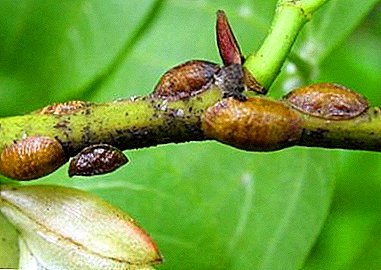 Siki, wings, eyes and legs are missing. But instead of all this, there is a piercing-sucking oral cavity.
Siki, wings, eyes and legs are missing. But instead of all this, there is a piercing-sucking oral cavity. - Young pests have a soft shield and the ability to move, after maturation of the shield, the female cannot move.
- 1.5 - 2 mm - the length of the female body. The shape is round or oval.
- Under the shield, the body color is brown or white.
- Matured individuals have a shield that completely covers their body. Consists of larval skins and secretory part.
- The shield has a dark brown or yellowish-brown tint. Color may change when the larvae mature.
Males:
- Unlike females, males do not have an oral cavity, but they also have wings, eyes, and limbs.
- Segmented body - head, chest, belly.
- Have a small flap.
- The color is mostly white, but there are also red, red-gray and light orange.
They are slightly different from ordinary shield plates. The difference is that in size it looks more like half a pea, more convex, reaching about 7 mm in size.
Reference! The female shield insects are the only ones who have evolved to a motionless lifestyle among all land animals.
What parts of the flower can hit?
Based on the fact that the main source of food for the salvage is plant sap, it can be said that this pest is first attached to the back of the leaf. Further, the parasite appears on the root area and the stem, and after about the inflorescences. Shchitovka attacks both adults and young individuals. The priority of these parasites is Phalaenopsis orchid.
What danger does an insect pose?
A small shield causes the development of sooty rot, which is extremely dangerous for orchids.. The following happens:
- First, a sticky liquid is released, which is ideal for the appearance of fungi.
- There is a violation of the processes of photosynthesis due to sticky excrements.
- The scammer, in turn, releases poison into the orchid, due to which the leaves of the plant are covered with spots.
- The leaf dies off as the spot area increases.
Examples of diseased plants in the photo
The appearance of an orchid when it is damaged by a shield is sure to make itself felt. A yellow contour appears on the edges of the leaves, they begin to lose their saturation and elasticity, while twisting. On the reverse side of the sheet are visible small tubercles, supplemented by bugs and sticky mass.
Signs of infection with a false guard and a shield are identical to each other.. Since shityovki attached to the sheet, while leading a passive lifestyle, some growers often take them for mote.



How to fight: step by step instructions
Get rid of shitovki quite problematic, but do not give up. To begin with, in case of detection of this parasite, it is necessary to inspect other plants on the subject of scale insects. Determine the degree of infection. Urgent measures to be taken immediately after the detection of this pest:
- A sick orchid needs to be isolated from healthy flowers.
- Rinse the leaves with warm water.
- With soapy water with household or tar soap you need to wash the leaves.
- To create an increased humidity, which the flaps strongly do not tolerate, by putting on a plastic bag, thereby creating a greenhouse. At the same time you need to air the plant every day for 30 minutes.
- It is also possible to maintain moisture by constantly spraying the leaves.
- Treat the soil with a broad-spectrum insecticide.
There are three ways to treat an infected plant.: biological, folk and chemical.
How to cure a biological way?
- The drug “Fitoverm”. Processing plants with this drug is allowed indoors. Dosage - 5 ml per 1 liter of water. The procedure is repeated 2 times with an interval of 5 days. The drug is safe for people and animals.
- Insects that eat shield insects (wasps, beetles, ladybugs). Before use, you need to examine the type of pest by contacting a specialist.
How to get rid of folk methods?
 Olive oil emulsion. For its preparation, add 2 tablespoons of oil to 1 liter of water, then mix and apply to the orchid. The procedure is repeated after 7-10 days.
Olive oil emulsion. For its preparation, add 2 tablespoons of oil to 1 liter of water, then mix and apply to the orchid. The procedure is repeated after 7-10 days.- A clove of garlic, cut along, rub the places affected by the shield. You can also make porridge from garlic and decompose it into parasites.
- Tincture of orange or mandarin peels. 200 grams of crushed crusts are added to 1 liter of water. The resulting mixture should be infused for 5 days in a dark place. After 2 liters of water add half a glass of infusion, you can also add a tablespoon of grated laundry soap. This mixture is necessary to process the plant once a week for 1-1.5 months.
- Decoction of fern. In the preparation of the broth is simple. 10 grams of dry fern should be filled with water and left for 1 day, then boil for 30 minutes, cool and strain. Spray for a week. It is first necessary to test the sensitivity of the plant to this agent.
What to use for chemical processing?
- Contact preparations “Spruzit-AF” and “Permethrin”. Penetrate the body of the insect, causing paralysis. After some period of time, the pests die. These drugs are highly effective and in a short period of time rid the orchid of shchitovok.
- “Arrivo”, “Aktellik”, “Aktara” are intestinal preparations. Their action begins only after ingestion of a pest. You need to use at least 2 times with a weekly interval.
- “Methylmercapthos”, “Phosphamide”, “Bi 58” - systemic drugs. Used for spraying plants infected with flakes. The active ingredients of drugs penetrate the plant, making their juice poisonous for flail. Next, the parasite drinks poisonous juice and dies.
All of the above methods of combat are also suitable for a false shield, since they are similar in principle to the shield.
What not to do?
It is clear that in war all means are good, but in the case of plants there are some exceptions. The use of substances containing nitrogen, growth regulators or stimulants is prohibited. The preparations "Epin" and "Zircon" are not suitable, as they only increase the reproduction of the scale and false guard. Manually collect flail plates is not recommended.
Important! When manually collecting flaps, the integrity of the shell is broken, thereby opening the way for new young individuals living under the shell.
Prevention of re-infection
 To eliminate the likelihood of re-injury, you must apply the following preventive measures:
To eliminate the likelihood of re-injury, you must apply the following preventive measures:
- Humidity should be above average. Lighting - sufficient.
- The orchid should be on the south windows.
- A new plant should be immediately investigated after purchase for the presence of infections, while placing it in quarantine for several weeks. This is due to the fact that in the early stages of development, young scale insects cannot be seen with the naked eye.
- It is necessary to view the leaves, flower stalks and flowers.
- For prevention, it is recommended to treat the leaves of the plant with oil. This tool is effective even with a small number of individuals - up to 5 pieces.
Shchitovka and false shield are very dangerous pests that are not easy to fight. Therefore, the struggle must begin immediately after their discovery. To avoid contamination of the orchid with this very unpleasant parasite, preventive measures should be taken.


 Siki, wings, eyes and legs are missing. But instead of all this, there is a piercing-sucking oral cavity.
Siki, wings, eyes and legs are missing. But instead of all this, there is a piercing-sucking oral cavity. Olive oil emulsion. For its preparation, add 2 tablespoons of oil to 1 liter of water, then mix and apply to the orchid. The procedure is repeated after 7-10 days.
Olive oil emulsion. For its preparation, add 2 tablespoons of oil to 1 liter of water, then mix and apply to the orchid. The procedure is repeated after 7-10 days.
